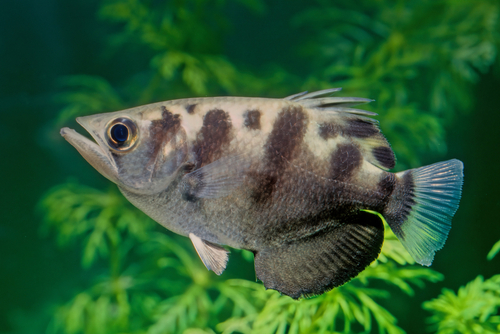If you’re an avid fish parent, or just someone who loves learning about these adorable creatures, you know that there are a ton of different types of fish out there-here’s 75+ popular fish that start with A.
- Arowana (Osteoglossidae)
- Atlantic cod (Gadus morhua)
- Australian lungfish (Neoceratodus forsteri)
- Asian carp (Cyprinus carpio)
- African catfish (Clarias gariepinus)
- Antarctic icefish (Channichthyidae)
- American eel (Anguilla rostrata)
- Archerfish (Toxotes)
- Amazon river dolphin (Inia geoffrensis)
There are many unique fish to choose from if you are looking for something new to try for your aquarium. The following popular fish that start with the letter A are just a few of the many options available to you.
Contents
Popular Fish That Start With A
More similar posts:
- Popular Fish That Start With M
- Popular Fish That Start with L
- Popular Fish That Start with G
- Popular Fish That Start with D
1. Arowana (Osteoglossidae)

If you’re a fish lover, then you’ve probably heard of the arowana. This amazing creature is unlike any other fish in the world, and it has a long and fascinating history.
The Arowana’s Physical Features
The arowana is a freshwater fish that can grow to be up to three feet long. It is silver in color with black spots on its body, and it has large scales that give it a armor-like appearance. The most distinctive feature of the arowana is its long, flowing tail fin, which can be up to two feet long!
The Arowana’s Place in Culture
The arowana has been revered by many cultures throughout history. In China, the arowana is considered to be a symbol of good luck and is often given as a gift for special occasions.
In many parts of South America, the arowana is considered to be a sacred creature. And in Australia, the Aboriginal people believe that the arowana is an ancestor spirit that can bring rain during times of drought.
The Arowana in Pop Culture
In recent years, the arowana has become increasingly popular in pop culture. The most famous example is probably the character finn from the popular cartoon Adventure Time. But the arowana has also been featured in movies like Finding Nemo and television shows like River Monsters.
2. Archerfish (Toxotes)

One of the most interesting things about the archerfish is its ability to shoot water out of its mouth with great accuracy. This skill is used to knock insects and other small animals into the water, where the fish can then eat them.
The archerfish’s aim is so precise that it can even hit prey that is hidden behind leaves or branches. Scientists believe that the fish are able to locate their prey by watching for movement and then using their keen eyesight to aim at the target.
The archerfish’s shooting skills are not just for show; they are essential for survival. These fish live in habitats where there is little food available, so they must be very efficient hunters in order to survive.
The good news is that the archerfish’s accuracy improves with practice; young fish often miss their targets, but they quickly learn from their mistakes and become more proficient hunters as they mature.
3. African catfish (Clarias gariepinus)

The African catfish is a large fish, with some adults reaching lengths of up to 4 feet (1.2 meters). They are dark brown or gray in color, with a white belly.
They have large scales and long, whisker-like barbels around their mouths. As mentioned before, they also have claws on their pectoral fins. These claws are used for defense and for catching prey.
African catfish are found in freshwater rivers, lakes, and ponds throughout Africa. They are most common in the tropical and subtropical regions of the continent. They prefer slow-moving waters with plenty of vegetation for hiding and ambushing predators.
As bottom-feeders, African catfish will eat just about anything they can find on the bottom of the water body they are in. This includes insects, small animals, plants, and even other fish.
They are opportunistic predators and will also hunt for food if given the chance. Their diet changes depending on what is available to them and what season it is.
African catfish are popular food fish in many parts of Africa. They are usually caught with nets or hooks and lines. In aquaculture, they are raised in ponds for their meat.
African catfish filets are white and flaky, with a mild flavor. They can be cooked in many different ways, such as frying, baking, or grilling.
4. Australian lungfish (Neoceratodus forsteri)
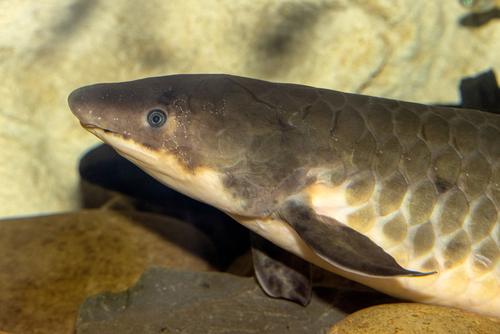
The Australian lungfish is a truly unique creature. It is one of only six extant species of lungfish, and it is the largest of those six species. It is also the only lungfish that is found in Australia. This fish is truly a living fossil, as it has remained largely unchanged for millions of years.
The Australian lungfish can grow to be up to six feet in length, making it the largest lungfish in the world. This fish has both gills and lungs, which allow it to breathe both in water and on land.
In fact, this fish can survive for several months out of water, provided that its skin stays moist. When conditions are dry, the Australian lungfish will bury itself in mud and aestivate until conditions improve.
This fish is an important part of the ecosystem in which it lives. The Australian lungfish is a top predator, and it helps to keep the populations of other animals in check.
This fish is also an important food source for many animals, including humans. The Aboriginal people of Australia have been eating this fish for thousands of years.
5. Antarctic icefish (Channichthyidae)

The Antarctic icefish is a type of fish that is found in the Southern Ocean. The fish is so named because it has adapted to the extremely cold temperatures of the water in which it lives.
The Antarctic icefish is the only known vertebrate animal to lack hemoglobin, which gives other fish their red blood color.
The lack of hemoglobin does not seem to affect the Antarctic icefish adversely, as it is able to swim great distances and depths. The fish has large eyes and a large mouth, which helps it to find food. The Antarctic icefish feeds on krill, squid, and other small fish.
The Antarctic icefish is an important part of the food chain in the Southern Ocean. Krill and squid feed on algae and zooplankton, which help to remove carbon dioxide from the water. This process helps to regulate global climate change.
6. American eel (Anguilla rostrata)
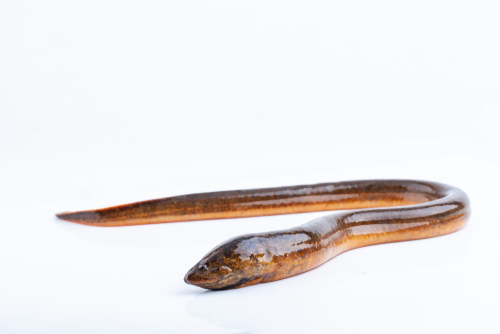
American eels have a long, slender body with small scales. They can grow to be up to four feet in length and weigh up to eight pounds. They have a uniform brown or yellowish coloration with a white belly.
Their eyes are small and their mouths are large, containing both sharp teeth and pads for crushing prey.
Habitat
American eels can be found in both fresh and saltwater habitats. They are most commonly found in rivers, streams, and lakes but can also be found in brackish estuaries and coastal waters. Juvenile eels
will often migrate great distances from their birthplace in order to find suitable habitat.
7. Amazon river dolphin (Inia geoffrensis)
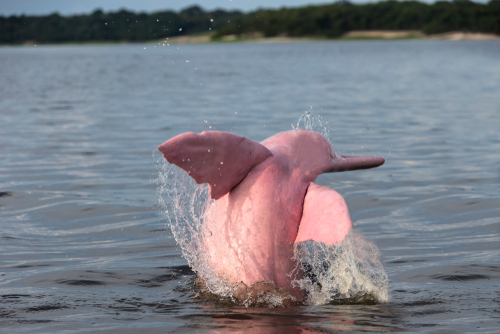
The Amazon river dolphin is a freshwater dolphin that is found in the rivers of the Amazon basin.
These dolphins are pink or white in color, and they have long snouts that help them to navigate through the murky waters of the rainforest. Although they are not often seen by humans, these dolphins are an important part of the Amazon ecosystem.
These dolphins live in family groups of up to 10 individuals, and they communicate using a range of different sounds. They are also very social creatures, and they often interact with other species of animals in the river.
The diet of the Amazon river dolphin consists mostly of fish, but they will also eat crustaceans, mollusks, and sometimes even small mammals. These dolphins use their long snouts to stun their prey before swallowing it whole.
The Amazon river dolphin is an endangered species due to a number of factors, including pollution, hunting, and habitat loss. However, there are now several conservation efforts underway to protect these unique creatures.
8. Asian carp (Cyprinus carpio)
he Asian Carp is a type of fish that is native to East Asia. It has been introduced to many other parts of the world, including North America and Europe. In North America, the fish has become an invasive species in some areas, causing problems for native wildlife.
The carp was originally brought to the United States in the 1970s to help control algae growth in southern fish farms. However, floods eventually allowed the carp to escape into the wild where they have thrived. The carp are now found in many U.S. states, including Illinois, Missouri, and Arkansas.
9. Atlantic cod (Gadus morhua)
The Atlantic cod is a member of the Gadidae family, which also includes haddock, pollock, and hake. Cod are characterized by their three-lobed tail fin, large mouth, and barbel (a fleshy filament) on their chin.
They can grow to be quite large, with some specimens weighing in at over 100 pounds!
Cod have been an important part of the human diet for millennia. They were a major source of food for the indigenous peoples of North America and were later exploited by European settlers.
The Atlantic cod fishery reached its peak in the mid-19th century, when hundreds of thousands of tons of cod were being caught each year. However, overfishing soon took its toll on the cod population, and catches began to decline in the early 20th century.
Today, the Atlantic cod is still harvested for its flesh, oil, and other products such as fish meal and fertilizers.
However, its population has declined sharply due to overfishing and other factors such as habitat loss and climate change. As a result, the Atlantic cod is now considered to be a “vulnerable” species by the International Union for Conservation of Nature (IUCN).
Freshwater fish that start with the letter A:
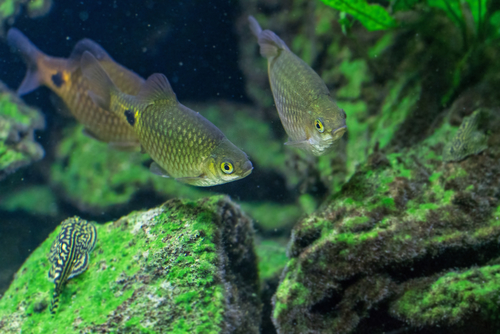
1. Ansorge’s Neolebias(Neolebias ansorgii)
2. Arulius Barb(Puntius arulius)
3. Australian Swamp Eel(Ophisternon gutturale)
4. Archerfish (Banded)(Toxotes jaculatrix)
5. Albino Driftwood Cat(Auchenipterus nuchalis)
6. Adonis Tetra(Lepidarchus adonis)
7. Angelicus(Synodontis angelicus)
8. Albino Fetivum(Mesonauta festiva)
9. Asian Arowana(Scleropages formosus)
10. African Tiger Fish(Hydrocynus goliath)
11. Asian Redtailed Catfish(Hemibagrus wyckioides)
12. Alabama Hog Sucker(Hypentelium etowanum)
13. African Whiptail Catfish(Phactura ansorgii)
14. Adonis Characin (Lepidarchus adonis signifer)
15. Asian Bumblebee Catfish(Leiocassis siamensis)
16. Adonis Pleco(Acanthicus adonis)
17. Axelrod’s Rainbowfish(Chilatherina axelrodi)
18. Archer eelpout(Lycodes sagittarius)
19. African Moon Tetra(Bathyaethiops caudomaculatus)
Saltwater fish that starts with A
1.Australian Pearl Arowana(Scleropages jardini)
2. Axelrod’s Corydoras(Corydoras axelrodi)
3. Altum Angel(Pterophyllum altum)
4. African Butterfly Cichlid(Anomalochromis thomasi)
5. Australian Rainbowfish(Melanotaenia fluviatilis)
6. African Pike-Characoid(Hepsetus odoe)
7. Asiatic Knifefish(Notopterus notopterus)
8. Atlantic Mudskipper(Periophthalmus barbarus)
9. Amur Catfish (Pelteobagrus fulvidraco)
10. Archerfish (Common)(Toxotes chatareus)
11. Algae Eater, Siamese(Crossocheilus siamensis)
12. Algae Eater, False Siamese(Epalzeorhynchos sp)
13. Albino Tiger Barb(Barbus tetrazona)
14. Arowana(Osteoglossum bicirrhosum)
15. African Peacock Cichlid(Aulonocara nyassae)
16. Akure Aphyosemion(Fundulopanchax gardneri)
17. Aba Aba (Gymnarchus niloticus)
18. Albert’s Synodontis(Synodontis alberti)
19. Atlantic Sturgeon(Acipenser sturio)
20. Anostomus(Anostomus anostomus)
21. Arched Corydoras(Corydoras arcuatus)
Tropical fish that start with A

1. African Blockhead Cichlid(Steatocranus casuarius)
2. Apollo Shark(Luciosoma trinema)
3. Ahl’s Rummy Nose Tetra(Hemigrammus rhodostomus)
4. Armoured Bichir(Polypterus delhezi)
5. Australian Lungfish(Neoceratodus forsteri)
6. Armor Bill Tetra(Phago loricatus)
7. Algae Eater, Lemon(Gyrinocheilus aymonieri)
8. Agassiz’s Dwarf Cichlid(Apistogramma agassizii)
9. Auratus(Melanochromis auratus)
10. African Red-Eyed Characin(Arnoldichthys spilopterous)
11. Azureus Cichlid (Copadichromis azureus)
12. African Brass Tetra(Brycinus humilis)
13. Australian Spotted Arowana(Scleropages leichardti)
14. Ablabes Barb(Barbus ablabes)
15. Aurora Cichlid(Pseudotropheus aurora)
16. Armored Catfish(Callichthys callichthys)
17. American Flagfish(Jordanella floridae)
18. African Glass Catfish(Pareutropius buffei)
19. African Wood Catfish(Chrysichthys ornatus)
20. Albino Ram(Microgeophagus ramirezi)
21. Australian Bass(Macquaria novemaculeata)
22. African Broad-Band Darter(Nannocharax parvus)
23. Arapaima(Arapaima gigas)

Ian Sterling, founder of Fishlab.com, began his aquarium journey over 30 years ago, driven by a deep fascination for fish and their diverse personalities. His website, Fishlab.com, is dedicated to making fishkeeping accessible and enjoyable, offering beginner-friendly guidance, expert insights, and a community for aquarists to connect and share experiences.


